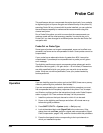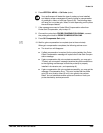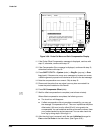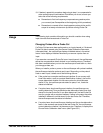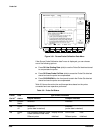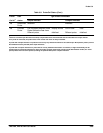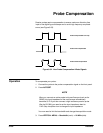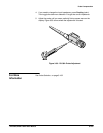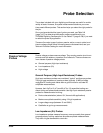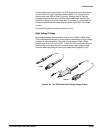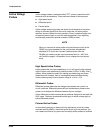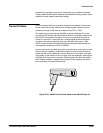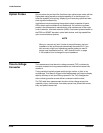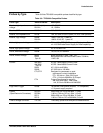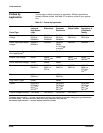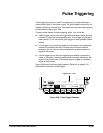
Reference
3Ć102
Probe Selection
The probes included with your digitizing oscilloscope are useful for a wide
variety of tasks. However, for special measurement situations you someĆ
times need different probes. This section helps you select the right probe for
the job.
Once you have decided the type of probe you need, use Table 3Ć6
(page 3Ć107) to determine the specific probe compatible with your
TDS 600A Digitizing Oscilloscope. Or use Table 3Ć7 (page 3Ć108) if you want
to select the probe by application.
There are five major types of probes: passive, active, current, optical, and
timeĆtoĆvoltage probes. Most of these types are discussed here; see your
Tektronix Products Catalog for more information.
Passive voltage probes measure voltage. They employ passive circuit comĆ
ponents such as resistors, capacitors, and inductors. There are three comĆ
mon classes of passive voltage probes:
H General purpose (high input resistance)
H Low impedance (Z
O
)
H High voltage
General Purpose (High Input Resistance) Probes
High input resistance probes are considered typical" oscilloscope probes.
The high input resistance of passive probes (typically 10ĂMW) provides
negligible DC loading and makes them a good choice for accurate DC
amplitude measurements.
However, their 8ĂpF to 12ĂpF (over 60ĂpF for 1X) capacitive loading can
distort timing and phase measurements. Use high input resistance passive
probes for measurements involving:
H Device characterization (above 15 V, thermal drift applications)
H Maximum amplitude sensitivity using 1X high impedance
H Large voltage range (between 15 and 500 V)
H Qualitative or go/noĆgo measurements
Low Impedance (Z
O
) Probes
Low impedance probes measure frequency more accurately than general
purpose probes, but they make less accurate amplitude measurements.
They offer a higher bandwidth to cost ratio.
Passive Voltage
Probes



